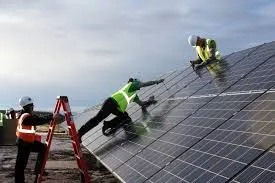Are you thinking about installing solar panels on your roof? Before making the investment, it’s crucial to evaluate the condition of your roof to confirm it can bear the additional weight and remain durable for years to come. In this article, we’ll cover when it’s necessary to replace your roof before installing solar panels, including how to identify signs of wear and understand the associated costs. By carefully considering these factors, you can prevent expensive repairs or premature replacements later and enjoy the full benefits of solar energy with confidence.
Assess the Age of Your Roof
The first step in deciding if your roof needs replacement before solar panel installation is assessing its age. Most roofs have an expected lifespan of 20 to 30 years, influenced by factors like roofing material, installation quality, and local climate conditions. For instance, roofs in areas exposed to extreme weather—such as heavy snowfall, intense heat, or high winds—may degrade faster than those in milder environments.
If your roof is nearing or has passed this age range, consider replacing it to maintain your home’s structural integrity. Installing solar panels on an aging roof can lead to issues such as leaks, structural damage, and accelerated deterioration of both the roof and solar equipment.
Addressing roofing problems proactively helps prevent costly repairs in the future. Therefore, evaluating your roof’s age and condition before investing in solar panels is essential to protecting your home and your investment.
Inspect for Signs of Wear
Next, thoroughly inspect your roof for wear and damage signs such as missing or cracked shingles, leaks, water stains on interior ceilings, sagging areas, or mold growth. These indicators often signal that your roof might not be structurally sound enough to support solar panels and may require replacement beforehand. Overlooking these warnings can result in more extensive damage and significant repair expenses down the road.
Consider Structural Integrity
It’s vital to ensure your roof’s structural integrity is sufficient to support solar panel installations. Solar panels add extra weight and demand secure mounting hardware firmly attached to the roof’s framework. If your roof’s structure is weakened or compromised, it may not sustain this additional load, risking damage or even collapse. A professional assessment can determine whether roof repair or a full roof replacement is necessary to safely accommodate solar panels.
Estimate Replacement Costs
After evaluating your roof’s age, condition, and structural soundness, consider the costs of replacement before solar installation. Roof replacement expenses vary based on size, materials, labor, and regional pricing. As of 2024, a typical asphalt shingle roof replacement costs between $6,000 and $12,000, while premium materials such as metal, tile, or slate may cost significantly more. Although the upfront cost might seem substantial, investing in a durable roof ensures long-term savings and reliability for your home and solar energy system.
Consult with Professionals
Ultimately, deciding when to replace your roof before installing solar panels requires expert advice. A licensed roofer can conduct a comprehensive inspection considering age, damage, and structural integrity. Based on their evaluation, they can offer tailored recommendations about timing a roof replacement and confirm if your existing roof is suitable to support solar panels.
Professionals can also inform you about modern roofing materials that provide enhanced durability, energy efficiency, and compatibility with solar systems. Collaborating with your solar panel provider, such as Olson Solar Energy, ensures all installation requirements are met seamlessly. This coordinated approach prevents future complications and builds a solid foundation for your sustainable energy goals. Additionally, integrating solar panels with a well-maintained roof can significantly increase your property’s value and contribute to environmental sustainability.
Installing solar panels is a smart, eco-friendly investment that offers both environmental and financial rewards over time. However, verifying your roof’s condition beforehand is essential to maximize these benefits without compromising safety or system performance.
To make informed decisions about roof replacement before solar installation, evaluate the roof’s age, condition, and structural strength. Estimate the replacement costs and consult with licensed professionals. Taking these steps now will protect your home’s integrity and ensure you fully enjoy the advantages of solar power for years to come.
Additionally, if you are interested in learning about The 5 Most Common Causes of Roof Repair, please visit our Roof Repair category for more information.
Regular roof maintenance and timely upgrades not only protect your home but also enhance the efficiency of your solar panel system. A roof in excellent condition allows optimal placement and alignment of solar panels, maximizing sunlight exposure and energy production. Furthermore, using roofing materials compatible with solar technology can improve overall system longevity and reduce maintenance costs. Homeowners should also consider ventilation and insulation improvements during roof replacement to boost energy efficiency. By investing in a robust roofing system tailored for solar integration, you contribute to a sustainable future while safeguarding your investment.



